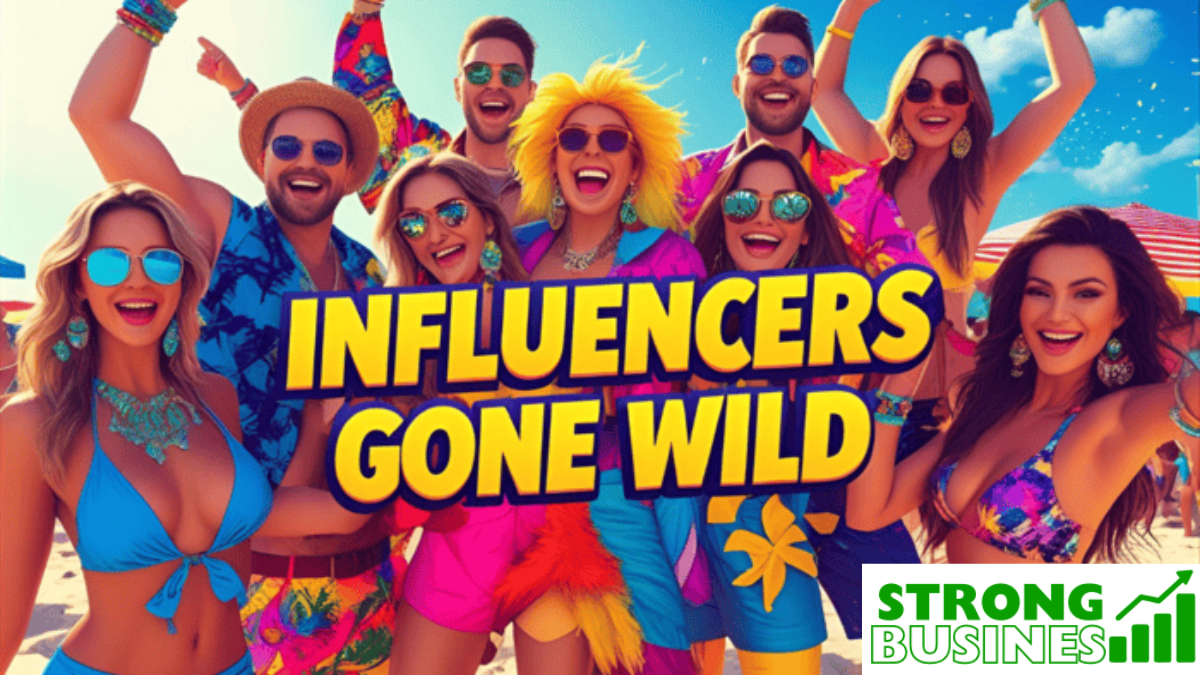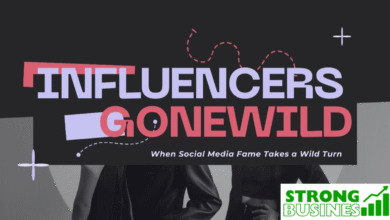The Rise of Influencer Culture
Influencers Gonewild The internet revolutionized communication, commerce, and culture, but one of its most fascinating developments is the emergence of the influencer. Once a term reserved for celebrities and business leaders, “influencer” now refers to anyone who builds a significant following online by sharing content. Platforms like Instagram, TikTok, YouTube, and Twitter have birthed a new era of digital celebrities who shape public opinion, spark trends, and move markets with a single post. Amid this rise, however, a new phenomenon has emerged — one that is capturing headlines and public interest alike: influencers gonewild.
The phrase “influencers gonewild” does not simply refer to the moral panic surrounding risqué content but encompasses a wider scope of digital personalities pushing boundaries for fame, clout, or profit. Whether through outrageous stunts, controversial statements, or unconventional business ventures, these influencers challenge the limits of acceptable behavior in the digital age. As such, the phenomenon invites questions about ethics, consequences, and the future of online celebrity.
The Temptation of Viral Notoriety
For many aspiring influencers, the digital stage is alluring. Social media promises the possibility of overnight fame, lucrative brand deals, and personal recognition. However, standing out in a saturated market often requires more than just talent or consistency—it demands shock value. This pursuit leads some content creators down a path of increasingly extreme content. They may post provocative photos, participate in risky challenges, or manufacture drama to attract engagement. This behavior, while initially effective in boosting views and followers, often spirals into notoriety rather than admiration.
The line between authenticity and performance blurs as influencers curate personas designed to provoke. This is particularly visible in the subculture surrounding “gonewild” content, where influencers lean into adult-oriented themes or intentionally provocative behavior. In many cases, their platforms become less about lifestyle inspiration and more about commodified spectacle, catering to a voyeuristic audience that thrives on scandal.
Navigating the Influencer Economy
The business of influencing is complex and competitive. The economic rewards of becoming a viral sensation are real: product sponsorships, affiliate sales, exclusive content subscriptions, and merchandise lines can generate substantial income. But the system rewards visibility over integrity, controversy over consistency. This environment encourages risk-taking and performative outrage, especially for influencers whose brand revolves around rebellion or defiance.
In the age of influencers gonewild, the strategy is clear—shock to sell. This includes creating OnlyFans accounts, engaging in public feuds, staging controversial social experiments, or posting hyper-personal disclosures. As these influencers attract views and spark online debates, brands sometimes distance themselves, while niche markets and underground fanbases flourish. This duality underscores the fragile nature of influencer economics, where one misstep can lead to cancellation or, paradoxically, even more fame.
Public Perception and the Price of Infamy
The public plays a critical role in the influencers gonewild phenomenon. Consumers of online content often reward sensationalism with engagement. Likes, comments, shares, and reposts all serve as metrics of success, regardless of the content’s nature. Influencers who break taboos or court controversy tap into the human fascination with the forbidden. For some followers, this is entertaining escapism. For others, it’s a moral failure.
Yet the cost of going too far is high. The digital space rarely forgets. Influencers who cross certain lines—legally, ethically, or socially—can face public backlash, platform bans, or even criminal charges. The fall from grace is often swift and brutal. Ironically, however, some influencers monetize even their downfall, releasing tell-all videos, participating in podcasts, or leveraging their “cancellation” for redemption arcs. The economy of outrage provides multiple chapters to the influencer journey, each one as profitable as the last, depending on how it is spun.
The Impact on Mental Health
Behind the glamorous posts and viral videos lies a harsh reality. Influencing, especially at the extremes seen in the gonewild trend, can take a heavy toll on mental health. The constant need to produce content, the pressure to stay relevant, and the fear of backlash create a high-stress environment. Many influencers report anxiety, depression, and burnout. The identity they create online can become a prison, especially if it no longer reflects their evolving self or values.
Additionally, the parasocial relationships formed between influencers and their audience add another layer of complexity. Influencers gonewild often attract both adoration and hatred in disproportionate measures. Harassment, doxxing, and threats are common consequences of controversial content. The psychological effects of living under such scrutiny are profound and often overlooked in discussions about internet fame.
Cultural Reflection and Social Commentary
Influencers gonewild is not just a trend—it’s a mirror reflecting the cultural shifts of the digital age. It reveals how society consumes media, negotiates morality, and defines fame. The rise of such influencers exposes generational divides, especially between digital natives and those who grew up without social media. For older audiences, the behavior of these influencers may seem shocking or inappropriate, while younger viewers may see it as a form of self-expression or rebellion against outdated norms.
Furthermore, the phenomenon opens up dialogue about body autonomy, sex work, digital privacy, and capitalist structures. Platforms like OnlyFans and Patreon have enabled influencers to profit from adult content on their own terms, raising questions about exploitation versus empowerment. At the same time, the glorification of wild behavior often sidelines discussions about accountability and responsibility.
The Role of Platforms and Algorithms
Social media platforms are not neutral. Their algorithms are designed to amplify engagement, not ethics. Content that provokes strong emotional reactions—such as awe, anger, or arousal—is more likely to go viral. This means that influencers who produce wild, sensational, or taboo-breaking content often receive more visibility than those who create educational or wholesome material. The platforms reward virality, regardless of the consequences.
This system is especially dangerous when it involves young audiences or vulnerable populations. Platforms often struggle to enforce their own community guidelines consistently, allowing problematic content to flourish while inadvertently censoring less controversial creators. The algorithms, in effect, become complicit in the influencers gonewild trend, pushing users toward more extreme content to maximize screen time and ad revenue.
Legal and Ethical Boundaries
As influencers experiment with ever more provocative content, they increasingly bump up against legal and ethical limits. Public indecency, endangerment, misinformation, and harassment are just a few of the issues that have landed influencers in legal trouble. In some cases, stunts that seemed humorous or rebellious at the time have led to lawsuits or criminal charges.
The ethical implications are equally troubling. Some influencers exploit tragic events, vulnerable individuals, or cultural issues for clout. Others promote harmful products or ideas under the guise of authenticity. While some creators attempt to justify their behavior as “just content,” others begin to question the consequences of their actions only after significant fallout occurs. The absence of formal regulation in the influencer industry allows this gray area to persist, though calls for reform are growing louder.
The Audience’s Responsibility
While influencers shoulder much of the blame or praise for their content, audiences are far from innocent. Every like, comment, and follow is a form of validation. Viewers have the power to shape digital culture by choosing what they consume and support. The meteoric rise of influencers gonewild reveals an appetite for spectacle, even when it borders on the unethical or inappropriate.
However, awareness is growing. Movements for ethical influencing, platform reform, and digital literacy are gaining traction. Viewers are beginning to demand more transparency, integrity, and accountability from influencers. Many users are choosing to support creators who align with their values, rather than those who merely entertain or shock. As consumers grow more conscious of the impact of their attention, the influencer ecosystem may gradually shift.
The Future of Influencing
The influencers gonewild era may represent a peak in the cycle of internet fame—a point at which spectacle overtakes substance. But just as digital culture evolves rapidly, so too do its trends and values. New generations of influencers are emerging who focus on education, activism, art, and innovation. While wild content may never disappear entirely, it may lose its novelty as audiences seek more meaningful interactions.
The influencer space is still relatively young, and its growing pains are evident. Industry watchdogs, mental health advocates, and even seasoned creators are working to develop better norms and support systems. Tools for self-regulation, AI moderation, and community governance may help curb the excesses of influencers gonewild in the future. Ultimately, the direction of influencer culture will be determined by a collective reevaluation of what we value in our digital heroes.
Conclusion
The phenomenon of influencers gonewild is a multifaceted reflection of internet culture, economic incentive, and human psychology. It reveals the allure and peril of fame in the digital age, where visibility often trumps virtue. While it is easy to dismiss the trend as mere entertainment or scandal, it also provides a critical lens through which to examine societal norms, platform responsibility, and individual agency.





